A Brief History of CPUs: 31 Awesome Years of x86
Intel Pentium Dual-Core
It might seem strange to resurrect the Pentium name at this stage in the game, but that's exactly what Intel did. Somewhat confusing, the Pentium Dual-Core is based on Intel's Core technology, and not earlier Pentium chips, nor is it a derivative of the Pentium D.
The first Pentium Dual-Core processors took aim at the notebook market before later being ported over to the desktop. These were intended to fill a gap between the Celeron and Core 2 series.
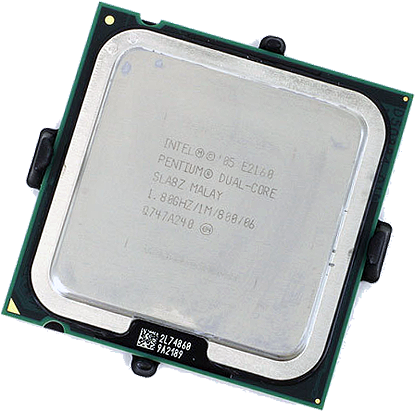
(Image Credit: TomsHardware)
Date Released : 2006
Clockspeed: 1.4GHz - 2.8GHz
Did you know?
AMD Phenom
Having given up the performance crown to Intel's Core 2 architecture, AMD's previous success led to optimism that something special was brewing with Barcelona, the codename for what would later be called Phenom. Hype was so high that it may have been impossible to live up to even if Intel never released Core 2, but a delay in Phenom's release would only foreshadow more trouble to come.
When Phenom was finally released, it failed to win back the performance crown, even though Core 2 had been out for a year. Early Phenom revisions also contained a bug, and overclocking efforts were often met with frustration. And if that weren't enough, Intel's Nehalem architecture was just around the corner.
Lest we give the wrong impression, Phenom wasn't (and still isn't) a bad architecture when judged on its own merits. Several SIMD instruction sets were present, including MMX, Enhanced 3DNow!, SSE, SSE2, SSE3, and SSE4a, it contained four cores, and performance overall was very good. It just wasn't on the level of Intel's latest silicon, made even worse (for AMD) by Intel's aggressive pricing strategy.
The biggest gaming news, reviews and hardware deals
Keep up to date with the most important stories and the best deals, as picked by the PC Gamer team.
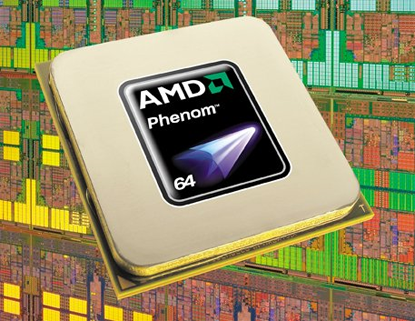
Date Released: 2007
Clockseepd: 1.8GHz to 3.0GHz
Did you know?
AMD's quad-core Phenoms were the first true monolithic quad-core chips, a feature mirrored in Intel's Core i7 CPUs.
Intel Core i7
If you're an AMD fan, go ahead and cue the Evil Empire music. The Core i7's march onto the desktop has spelled nothing but trouble for AMD, who is still struggling to keep up with Intel's previous generation Core 2 architecture. Meanwhile, Core i7 (formerly known as Nehalem) stands in a league of its own.
Adding insult to injury, Intel borrowed a page from AMD and finally retired the traditional frontside bus in favor of a QuickPath Interconnect, which is Intel's equivalent of AMD's HyperTransport. This point-to-point interconnect allows for much faster communication between the CPU and various subsystems. This has also meant that overclockers have had to 'relearn' how to overclock, which includes learning several new terms.
So far there are just three Core i7 processors available -- Core i7-920, Core i7-940, and Core i7-965 -- each built on a 45nm manufacturing process with 731 million transistors and 8MB of L2 cache.
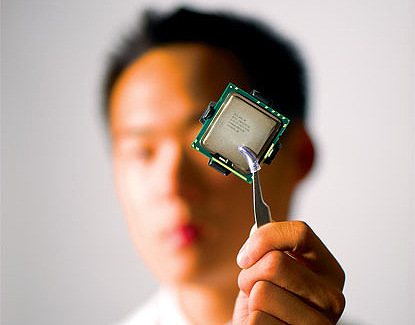
Date Released : 2008
Clockspeed: 2.66GHz - 3.2GHz
Did you know?
AMD Phenom II
Many feel that Phenom II is what the original Phenom should have been all along. With triple the amount of L3 cache (6MB versus 2MB), DDR3 support, and the elimination of the a 'cold bug' that was the bane of extreme overclockers, the Phenom II closed the performance gap between itself and Intel's Core 2 line. The only problem with that is Intel has since moved on to Core i7, which currently is untouchable by the best AMD has to offer.
Unable to compete for the performance crown, AMD has been forced to price its processors well below where it would like. Whereas the Athlon 64 X2 chips had a tendency to run high, AMD's flagship processor today, the Phenom II X4 940, streets for just $215, well below the $1,000 mark that flagship processors typically command.
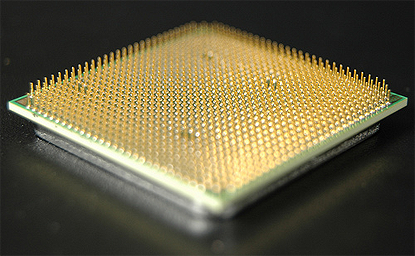
(Image Credit: Flickr JoongDal)
Date Released: 2008
Clockspeed: 2.5GHz - 3.0Ghz
Did you know?
Intel Atom
You may have noticed we left a few mobile-specific processors off our x86 timeline and have instead brought them up where appropriate. But we can't ignore Intel's Atom series, which has been a driving force in the uber-popular netbook (mobile) and nettop (desktop) sectors. Why is this important? Because despite a global economic downturn, worldwide PC sales have remained on an uptick thanks in large part to the explosive growth of netbooks, the vast majority of which sport an Intel Atom processor inside.
On the hardware front, these low-power chips only boast 47 million transistors, 512KB of L2 cache, and a top clockspeed of 1.86GHz. A dual-core variant exists for the desktop, but so far not for mobile PCs.
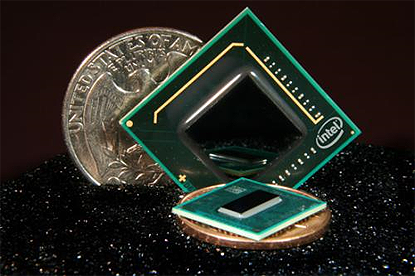
Date Released : 2008
Clockspeed: 800MHz - 2GHz
Did you know?
Almost 15 million Atom-based netbooks were shipped in 2008, with growth expected in 2009.
VIA Nano
While Intel's Atom series appears to have a death grip on the low-power computing market, don't count VIA out. VIA's Nano line might not enjoy the same level of sales as the Atom, but clock for clock, some benchmarks show the Nano performing better, albeit while also consuming slightly more power.
Available anywhere from 1GHz to 1.8GHz on a 533MHz or 800MHz frontside bus, VIA's Nano includes up to a whopping 1MB of L2 cache. It also supports several instruction sets, including MMX, SSE, SSE2, SSE3, and SSSE3.
Furthing adding to Nano's appeal is the promise of a dual-core variant aimed at netbooks in 2010. Should it beat Intel to the punch -- and all indications suggest it will -- the Nano could prove to be a game changer.
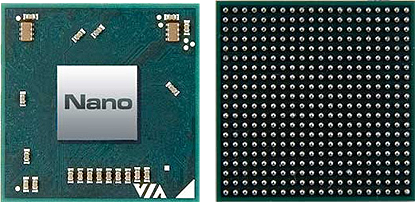
Date Released: 2008
Clockspeed: 1GHz - 1.8GHz

